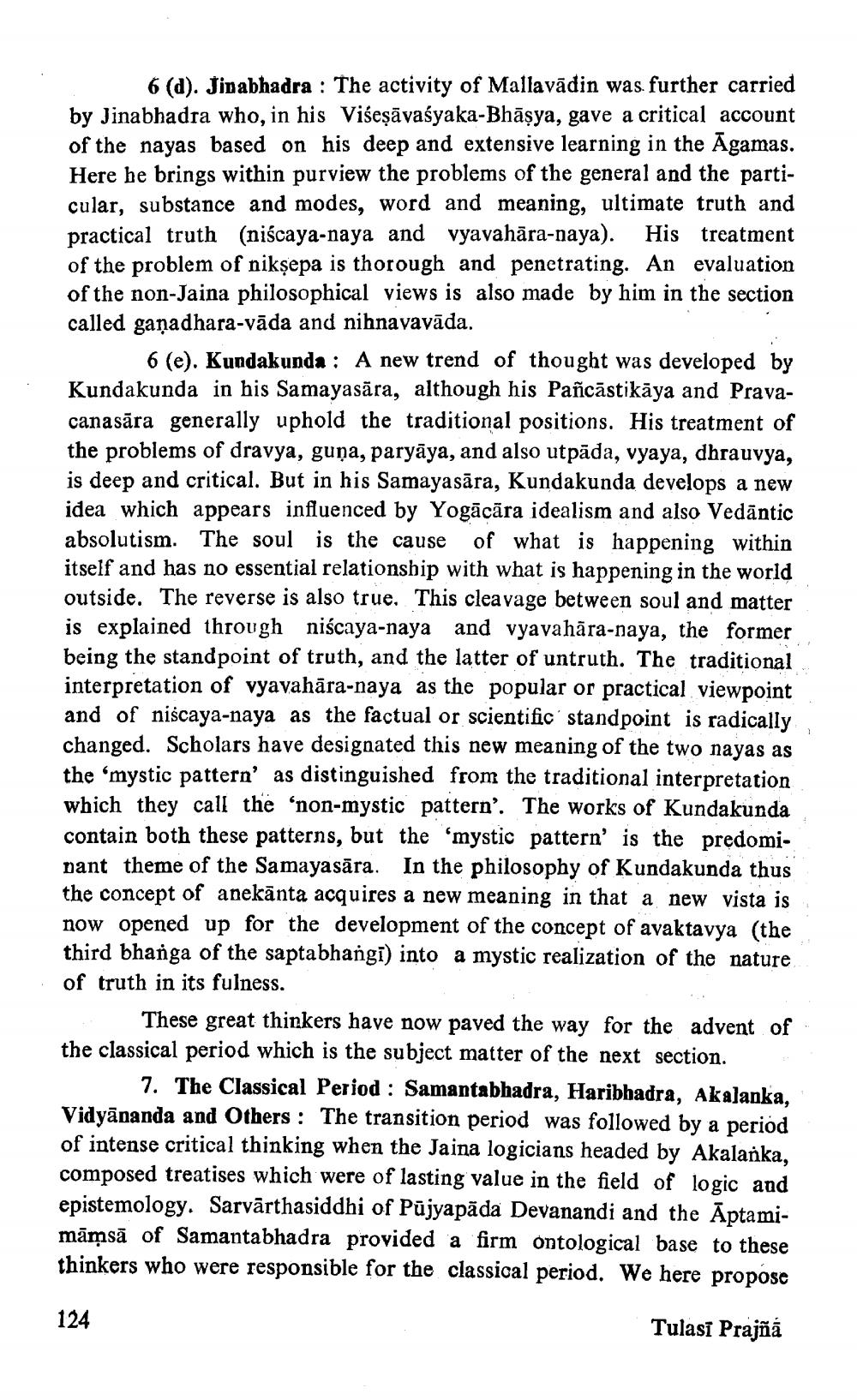________________
6 (d). Jinabhadra: The activity of Mallavadin was further carried by Jinabhadra who, in his Viseṣāvaśyaka-Bhāṣya, gave a critical account of the nayas based on his deep and extensive learning in the Agamas. Here he brings within purview the problems of the general and the particular, substance and modes, word and meaning, ultimate truth and practical truth (niścaya-naya and vyavahara-naya). His treatment of the problem of niksepa is thorough and penetrating. An evaluation of the non-Jaina philosophical views is also made by him in the section called ganadhara-vāda and nihnavavāda.
6 (e). Kundakunda: A new trend of thought was developed by Kundakunda in his Samayasara, although his Pañcāstikāya and Pravacanasara generally uphold the traditional positions. His treatment of the problems of dravya, guna, paryaya, and also utpāda, vyaya, dhrauvya, is deep and critical. But in his Samayasara, Kundakunda develops a new idea which appears influenced by Yogacara idealism and also Vedāntic absolutism. The soul is the cause of what is happening within itself and has no essential relationship with what is happening in the world outside. The reverse is also true. This cleavage between soul and matter is explained through niscaya-naya and vyavahara-naya, the former being the standpoint of truth, and the latter of untruth. The traditional interpretation of vyavahara-naya as the popular or practical viewpoint and of niscaya-naya as the factual or scientific standpoint is radically changed. Scholars have designated this new meaning of the two nayas as the 'mystic pattern' as distinguished from the traditional interpretation which they call the 'non-mystic pattern'. The works of Kundakunda contain both these patterns, but the 'mystic pattern' is the predominant theme of the Samayasara. In the philosophy of Kundakunda thus the concept of anekanta acquires a new meaning in that a new vista is now opened up for the development of the concept of avaktavya (the third bhanga of the saptabhangi) into a mystic realization of the nature. of truth in its fulness.
These great thinkers have now paved the way for the advent of the classical period which is the subject matter of the next section.
7. The Classical Period: Samantabhadra, Haribhadra, Akalanka, Vidyananda and Others: The transition period was followed by a period of intense critical thinking when the Jaina logicians headed by Akalanka, composed treatises which were of lasting value in the field of logic and epistemology. Sarvarthasiddhi of Pujyapada Devanandi and the Aptamimāmsā of Samantabhadra provided a firm ontological base to these thinkers who were responsible for the classical period. We here propose
Tulasi Prajñā
124




